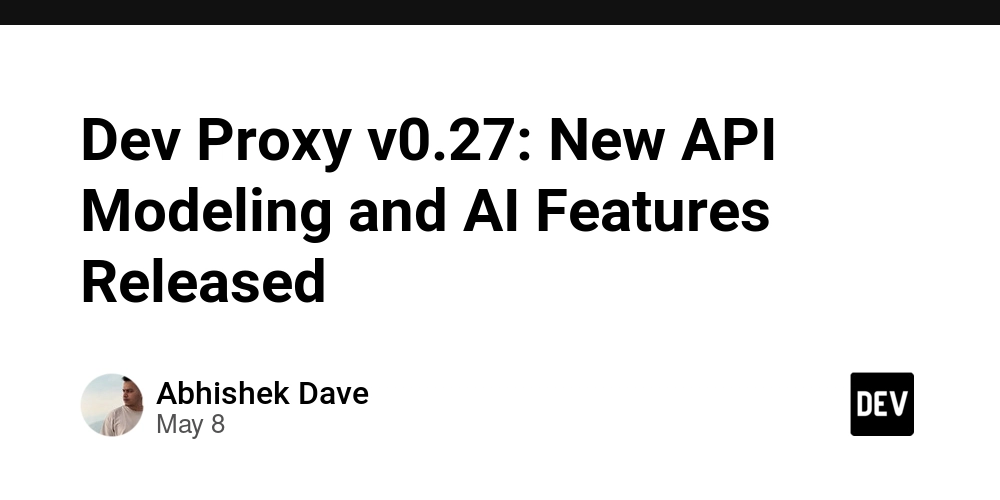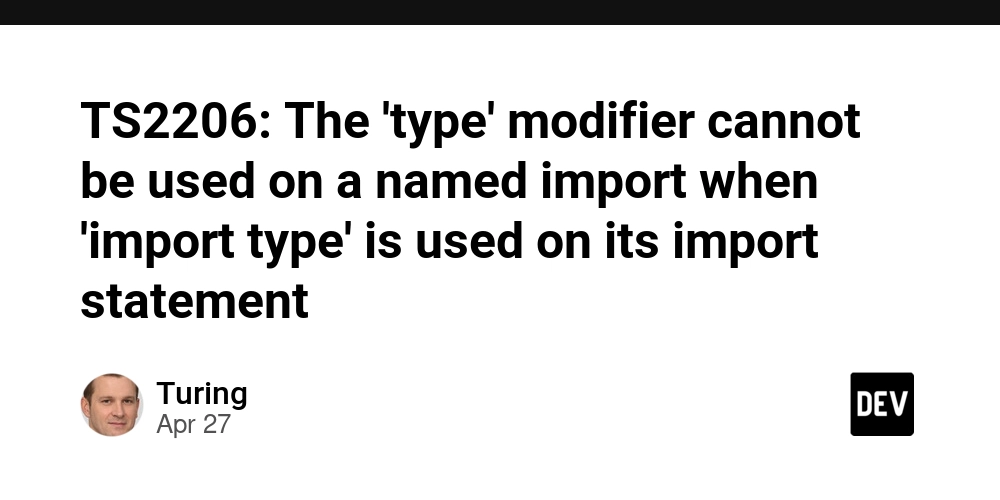Stripe Just Became a Merchant of Record
Stripe just rolled out something new: Managed Payments, now in private preview. This isn't just a new feature. It's a big shift in how you can run your SaaS business. If you've been using Lemon Squeezy or Gumroad for tax and compliance reasons, Stripe is now building something similar, but directly inside their own ecosystem. It's Stripe acting as the seller, not you. I’ve been building UserJot to handle feedback and changelogs for products like this, so naturally this caught my attention. Let’s go over what this means, who it’s for, and why it might save you hours of work (and stress). What is Stripe Managed Payments? Managed Payments is a new way to sell digital products and subscriptions through Stripe, where Stripe becomes your merchant of record. That means: Stripe is the legal seller to your customers. Stripe collects and remits sales tax, VAT, and GST where needed. Stripe handles fraud prevention and disputes. Stripe takes care of customer support (for payment issues). You still build the product but Stripe runs the checkout and handles the messy stuff. It's Stripe's answer to tools like Lemon Squeezy and Paddle, built for modern SaaS teams who want to skip the boring legal work and just ship. What's a "merchant of record"? A merchant of record is the legal entity that sells the product to the customer. Normally, that's you. That means you're legally responsible for: Registering in every country or state where taxes apply. Collecting and remitting those taxes. Handling chargebacks and fraud claims. Responding to refund requests and disputes. Staying compliant with local laws. With Managed Payments, Stripe takes that on. You act more like a vendor or supplier and Stripe becomes the one officially making the sale. This saves you time and protects you legally, especially if you're selling globally. What kinds of businesses can use it? Right now, Managed Payments is meant for: SaaS products Digital software (apps, tools, extensions) Digital downloads sold through subscriptions If you're running a monthly or yearly subscription and want Stripe to handle the transaction side of things, this is for you. It's not for: Physical products One-off purchases (yet) Service businesses (agencies, consultants) Donations or fundraising Why does this matter? Running a SaaS business might look simple on the outside. But the back office part taxes, legal, chargebacks is a mess, especially when you start selling globally. Here's how Stripe's Managed Payments helps: 1. Tax compliance is handled Let's say someone from Germany signs up for your $29/month plan. Germany has strict VAT rules. Normally, you'd need to: Register for EU VAT Collect the correct VAT amount Remit it to the EU via a system like VAT MOSS Now imagine doing that for customers in Canada, Australia, the UK, and 30+ US states. You'd spend more time doing tax admin than writing code. With Managed Payments, Stripe handles all of that. They figure out where the customer is, apply the right tax, collect it, and remit it. You don't lift a finger. 2. You don't have to fight chargebacks Chargebacks are not just annoying they can be expensive. Even if you win, you usually lose time (and a fixed fee). Plus, if you get too many, you risk penalties or account shutdowns. With Managed Payments, Stripe deals with chargebacks directly. It's not your problem anymore. 3. Customer support is offloaded Let's say a customer's credit card was charged twice, or they didn't get a receipt, or they want a refund. These are all payment-related support requests. Stripe now handles these on your behalf. You'll still want to support your actual product, but Stripe will manage the transaction-related stuff. 4. No more registering in every region In the past, you might've needed to register for sales tax in 10+ countries just to stay compliant. Each one with its own forms, systems, and deadlines. Now, you don't. Stripe is the seller, so they deal with all that. This makes international sales possible for solo founders and small teams without needing an accountant in every country. What does the integration look like? Right now, Managed Payments only works with: Stripe Checkout Subscription-based digital products Eligible countries (US, Canada, UK, most of EU) That means you'll need to use Stripe's hosted Checkout page for now not Elements or custom-built UIs. It's limited but very straightforward if you're just starting or want something simple. Support for other flows like one-time payments or Stripe Elements might come later as the feature expands. What if I need something more flexible? If your use case doesn't fit yet, Stripe recommends: Lemon Squeezy especially for one-time purchases or unsupported countries Standard Stripe setup using Payments + Tax Adding tools like Stripe Connect for platforms and marketplaces If you

Stripe just rolled out something new: Managed Payments, now in private preview.
This isn't just a new feature. It's a big shift in how you can run your SaaS business.
If you've been using Lemon Squeezy or Gumroad for tax and compliance reasons, Stripe is now building something similar, but directly inside their own ecosystem. It's Stripe acting as the seller, not you.
I’ve been building UserJot to handle feedback and changelogs for products like this, so naturally this caught my attention.
Let’s go over what this means, who it’s for, and why it might save you hours of work (and stress).
What is Stripe Managed Payments?
Managed Payments is a new way to sell digital products and subscriptions through Stripe, where Stripe becomes your merchant of record.
That means:
- Stripe is the legal seller to your customers.
- Stripe collects and remits sales tax, VAT, and GST where needed.
- Stripe handles fraud prevention and disputes.
- Stripe takes care of customer support (for payment issues).
- You still build the product but Stripe runs the checkout and handles the messy stuff.
It's Stripe's answer to tools like Lemon Squeezy and Paddle, built for modern SaaS teams who want to skip the boring legal work and just ship.
What's a "merchant of record"?
A merchant of record is the legal entity that sells the product to the customer.
Normally, that's you. That means you're legally responsible for:
- Registering in every country or state where taxes apply.
- Collecting and remitting those taxes.
- Handling chargebacks and fraud claims.
- Responding to refund requests and disputes.
- Staying compliant with local laws.
With Managed Payments, Stripe takes that on. You act more like a vendor or supplier and Stripe becomes the one officially making the sale.
This saves you time and protects you legally, especially if you're selling globally.
What kinds of businesses can use it?
Right now, Managed Payments is meant for:
- SaaS products
- Digital software (apps, tools, extensions)
- Digital downloads sold through subscriptions
If you're running a monthly or yearly subscription and want Stripe to handle the transaction side of things, this is for you.
It's not for:
- Physical products
- One-off purchases (yet)
- Service businesses (agencies, consultants)
- Donations or fundraising
Why does this matter?
Running a SaaS business might look simple on the outside. But the back office part taxes, legal, chargebacks is a mess, especially when you start selling globally.
Here's how Stripe's Managed Payments helps:
1. Tax compliance is handled
Let's say someone from Germany signs up for your $29/month plan. Germany has strict VAT rules. Normally, you'd need to:
- Register for EU VAT
- Collect the correct VAT amount
- Remit it to the EU via a system like VAT MOSS
Now imagine doing that for customers in Canada, Australia, the UK, and 30+ US states. You'd spend more time doing tax admin than writing code.
With Managed Payments, Stripe handles all of that. They figure out where the customer is, apply the right tax, collect it, and remit it. You don't lift a finger.
2. You don't have to fight chargebacks
Chargebacks are not just annoying they can be expensive. Even if you win, you usually lose time (and a fixed fee). Plus, if you get too many, you risk penalties or account shutdowns.
With Managed Payments, Stripe deals with chargebacks directly. It's not your problem anymore.
3. Customer support is offloaded
Let's say a customer's credit card was charged twice, or they didn't get a receipt, or they want a refund. These are all payment-related support requests.
Stripe now handles these on your behalf. You'll still want to support your actual product, but Stripe will manage the transaction-related stuff.
4. No more registering in every region
In the past, you might've needed to register for sales tax in 10+ countries just to stay compliant. Each one with its own forms, systems, and deadlines.
Now, you don't. Stripe is the seller, so they deal with all that.
This makes international sales possible for solo founders and small teams without needing an accountant in every country.
What does the integration look like?
Right now, Managed Payments only works with:
- Stripe Checkout
- Subscription-based digital products
- Eligible countries (US, Canada, UK, most of EU)
That means you'll need to use Stripe's hosted Checkout page for now not Elements or custom-built UIs. It's limited but very straightforward if you're just starting or want something simple.
Support for other flows like one-time payments or Stripe Elements might come later as the feature expands.
What if I need something more flexible?
If your use case doesn't fit yet, Stripe recommends:
- Lemon Squeezy especially for one-time purchases or unsupported countries
- Standard Stripe setup using Payments + Tax
- Adding tools like Stripe Connect for platforms and marketplaces
If you want to compare the costs of different processors, we did a breakdown you can check out here:


















_Aleksey_Funtap_Alamy.jpg?width=1280&auto=webp&quality=80&disable=upscale#)






















































